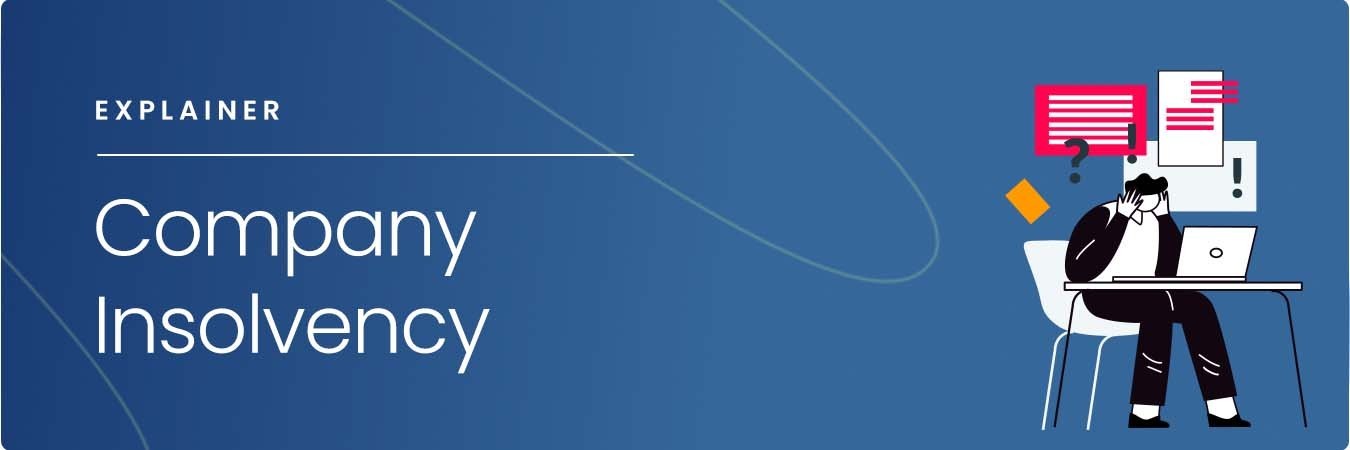The 3-Minute Rule for Insolvency Practitioner
The 3-Minute Rule for Insolvency Practitioner
Blog Article
Everything about Insolvency Practitioner
Table of ContentsIndicators on Insolvency Practitioner You Should KnowIndicators on Insolvency Practitioner You Should KnowEverything about Insolvency Practitioner8 Simple Techniques For Insolvency PractitionerThe Insolvency Practitioner PDFsThe Single Strategy To Use For Insolvency PractitionerInsolvency Practitioner Things To Know Before You Buy
Bankruptcy is when obligations are above the worth of the company, or when a borrower can not pay the financial debts they owe. A business can end up being bankrupt as a result of a number of circumstances that lead to bad cash circulation. When faced with insolvency, a business or person can get in touch with creditors straight and restructure financial debts to pay them off.
Service owners may call creditors straight and restructure financial debts right into more workable installations. Financial institutions are usually open to this approach due to the fact that they want to be settled and prevent losses, also if the payment is on a postponed routine.
The proprietor develops a proposal outlining how the financial obligation might be restructured making use of expense reductions or various other strategies for support. The proposition shows financial institutions how the business may create adequate cash circulation for successful operations while paying its financial obligations. Commonly, a forgiven financial debt might be thought about revenue by the Internal Income Solution (INTERNAL REVENUE SERVICE).
A Biased View of Insolvency Practitioner
When a service needs to pay increased costs for products and solutions, the firm passes along the cost to the customer. As opposed to pay the enhanced expense, many customers take their business in other places so they can pay less for a service or product. Losing customers results in losing revenue for paying the company's financial institutions.
When operations stop, so does the firm's revenue. Some companies become insolvent since their products or solutions don't advance to fit consumers' transforming demands.
Insolvency Practitioner for Beginners
Costs exceed earnings and expenses stay unsettled. Kinds of insolvency consist of cash-flow insolvency and balance-sheet bankruptcy. Cash-flow insolvency occurs when a business has the possessions to cover their debts however they remain in the wrong type, such as realty rather than fluid funds. Balance-sheet insolvency, on the other hand, shows an absence of properties in any type to cover debts.
The IRS states that an individual is insolvent when the complete liabilities surpass complete assets. Insolvency Practitioner. A insolvency, on the other hand, is a real court order that shows just how a financially troubled individual or service will certainly repay their lenders, or how they will certainly sell their properties in order to make the payments
Insolvency Practitioner for Dummies
When a business or person is financially troubled, they can not fulfill their monetary responsibilities. Bankruptcy is not the same as insolvency, although a firm that has actually become financially troubled might file for personal bankruptcy. Bankruptcy is the state of not being able to pay your responsibilities while bankruptcy is a lawful procedure to release your financial debts.
Comprehending the aspects that can lead to insolvency, such as overspending, article source can aid you avoid bankruptcy and its effects.
Getting My Insolvency Practitioner To Work
It is popular that directors and policemans of corporations (and supervisors of restricted responsibility business) owe fiduciary duties to their companies and their investors (or members). These fiduciary obligations are specified by state laws and, though there are variants from one state to another, they normally consist of a responsibility of commitment and a task of care.
The task of care requires supervisors and police officers to exercise diligence, to make enlightened choices, and to act in great faith so that their activities remain in the most effective interest of the business. Past the scope of this discussion, some states allow these responsibilities to be restricted either by so keeping in mind in the organizational files or complying with various other demands.
Little Known Facts About Insolvency Practitioner.

Beware about giving investors preferential treatment at the expense of financial institutions (e.g., licensing and moneying a dividend or a stock redemption). Take care regarding advantageous therapy between classes of investors. Clear up efforts to discover all the facts prior to taking a particular program of action; supervisors should truly think that any kind of choices made remain in the most effective passions of the firm in its whole (i.e., choices will certainly be assessed in hindsight in light of the effect of such actions on the corporation).
In any kind of personal bankruptcy or insolvency proceeding, payments made to specific financial institutions at the expense of other creditors can be clawed back, particularly if there is some link between the business and the financial institution. Think about proposing at an annual investor conference (or any kind of various other conference of shareholders) a resolution attesting that all previous organization choices and activities taken by the directors and police officers of the visite site corporation were taken in good confidence after an exercise of practical treatment.
Some Known Details About Insolvency Practitioner
Completely disclose any type of individual or company partnerships with parties on the various other side of deals entailing the corporation to prevent the appearance of a dispute of passion. In examining possible fund increasing deals or a sale of assets of the distressed firm, understand that these deals may be scrutinized later on because of any kind of subsequent growth of supervisors' fiduciary tasks to consist of lenders.
Report this page